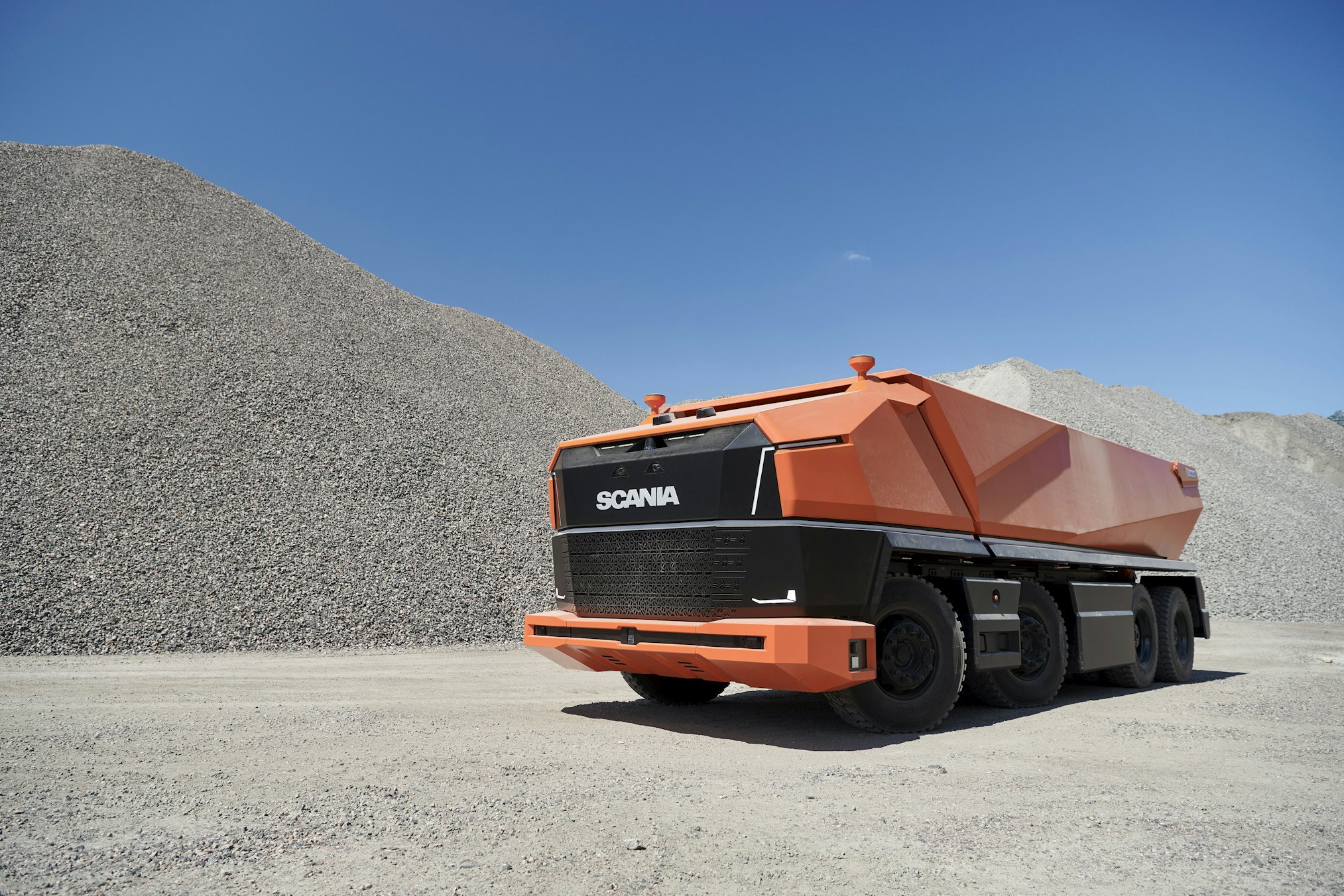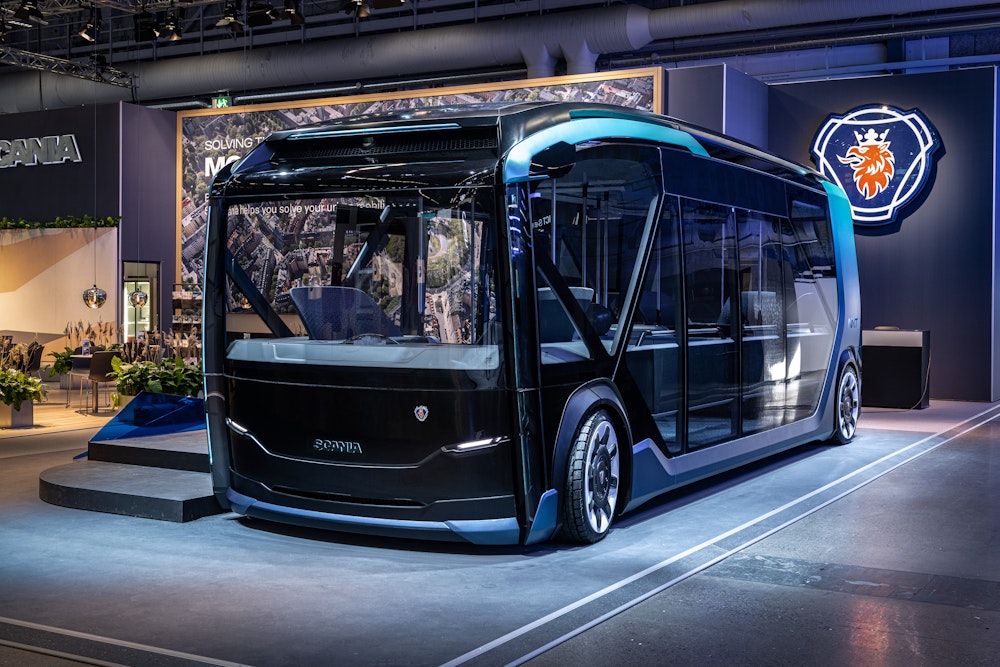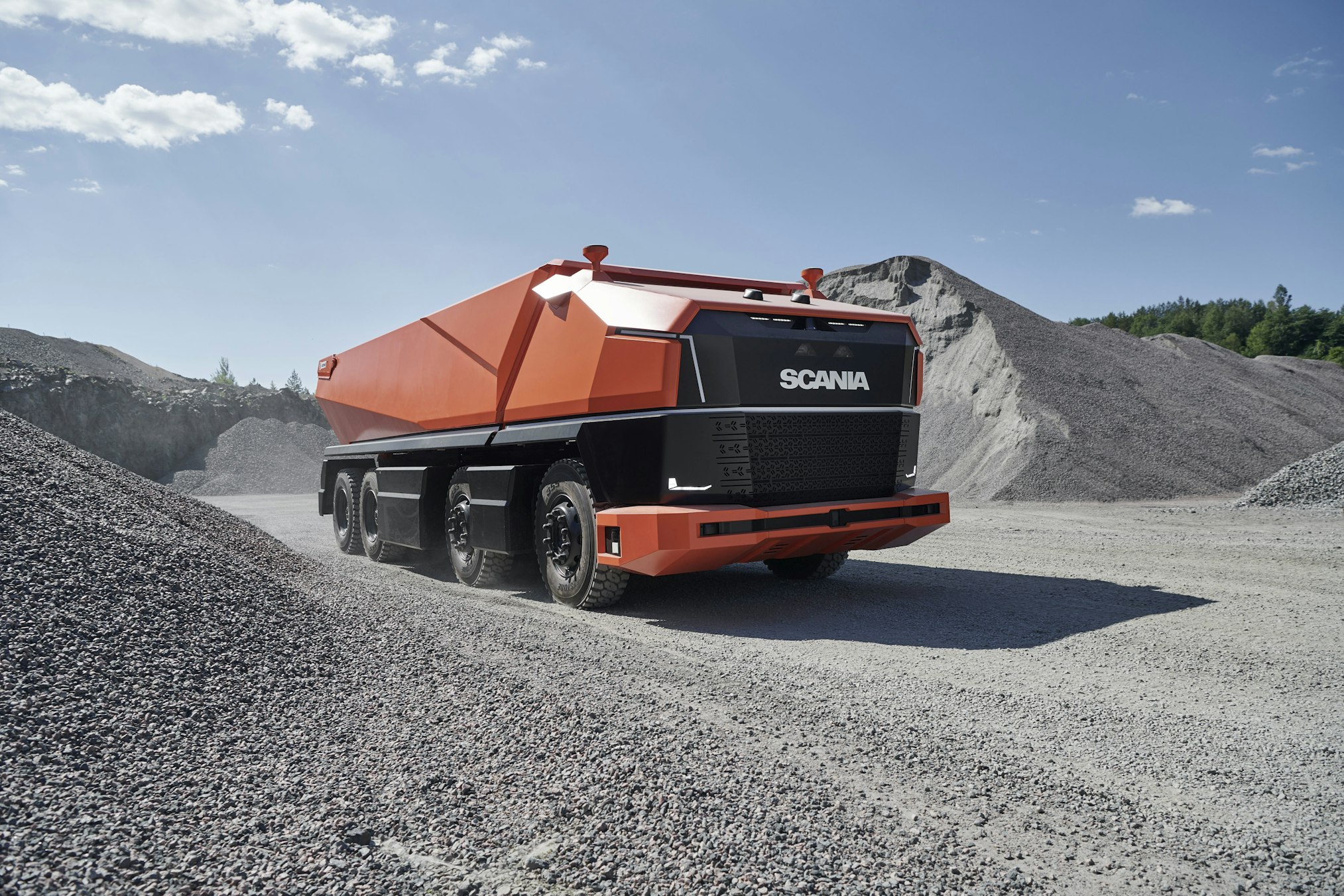Autonomy, modularity and alternative fuels: architecture for the future of transportation at Scania
21 November, 2019
We sat down to speak with Nils-Gunnar Vågstedt, Head of Innovation, R&D at Scania, on his outlook on how the industry is shifting, the trends driving change and what’s at the heart of Scania’s approach to the decarbonization of transportation.

With Scania having recently unveiled two vehicle concepts which set the tone for the company’s vision for the future, it’s an ideal time to hear about how one of the world’s leading heavy-transport vehicle manufacturers is approaching an industry is the midst of great change.
One of those concepts is Scania AXL – a fully-autonomous cabless concept truck, designed for driverless-operations in mining and construction environments. The other is Scania NXT – a battery-enabled, fully-electric self-driving urban transport system.
Scania NXT is a vision of the future for transport in cities, according to Scania. And while the company acknowledges that several of the technologies it integrates have yet to fully mature it is important to actually build a concept vehicle to visibly and technically demonstrate ideas of what is within reach.

Modularity is about minimizing the number of components while maximizing possibility to offer customers a dedicated solution.
Battery-powered electrification, as used in Scania NXT (pictured above), is certainly one of the key aspects to Scania’s future portfolio.
As Nils-Gunnar says: “Electrification is spreading through the whole spectrum of applications and transport modes of goods and mobility. Albeit not the only solution, electrification by batteries has been and will be a part of the complete transport solution of the future – already today Scania offer an electric city bus solution, and Scania NXT which is a vision for 2030 and beyond takes that further.”
Scania’s deployment of electric buses in Sweden is presented in an earlier post.
Scania NXT takes electrification further by incorporating something at the core of Scania’s approach to innovation: modularity. With this concept vehicle, front and rear drive modules can be fitted to a bus body, a distribution truck body or a municipal refuse collector. Scania estimate that its range with present-day batteries is estimated at 245 kilometres.
Nils-Gunnar says: “Modularity is about minimizing the number of components while maximizing possibility to offer customers a dedicated solution. More or less, you can combine and mix those components; so choose the number of axles, type of propulsion, steering specification. Then choose a cab, or even not a cab at all.”
“Modular thinking is enabling us to streamline R&D of components and reduces manufacturing costs,” he adds, explaining that these benefits enable development of new, clean solutions.

As being applied at Scania, modularity also highlights how the company is open to technology types. “Electrification is not the singular solution for the future of all transport options in our outlook. It has a great role to play in sustainable transport, but as will other technologies.”
Here, Scania’s AXL provides insight on the thinking.
Scania AXL can load up to 40 tons and has a combustion engine running on a type of biodiesel called Hydrotreated Vegetable Oil (HVO). However, incorporating Scania’s modular approach, Scania AXL can be equipped with any engine and wheel configuration available in the Scania modular system.
“It is reasonable to imagine that Scania AXL could be adapted to a battery electric powertrain,” says Nils-Gunnar says. “But it’s important to highlight that it is a concept vehicle, built to pilot learnings in terms of the autonomous capabilities.”

“By keeping novel technologies apart, it brings advantages for testing. It facilities the learning process by isolating domains over which we’re testing. Development in self-driving vehicles has made great strides in recent years but we still don’t have all the answers. Through concept vehicles like Scania AXL we break new ground and continue to learn at great speed.”
A varied portfolio
Nils-Gunnar explains how modular thinking opens up new opportunities and flexibility, saying: “We are absolutely seeking to learn more about how modularity can broaden the Scania spectrum of solutions down to the smaller end. Scania NXT for instance is an idea of how one concept with different bodies could be used in a public transport setting during peak hours, to deliver goods or to handle recycling during off-peak hours.”
“There’s been a historical idea for vehicles getting larger and larger. In Europe and the US still, there is a hefty cost to having driving; so extending vehicle performance, whilst still using one driver has been favoured for profitability. As we enter a new world, without drivers, then you pick away those assumptions.”
He adds: “We have to explore if we need to downscale vehicle size, or if it’s still rational to have larger vehicles.”
Noting the increasingly common discussion being had over trending towards smaller shuttle fleets in mining operations, Nils-Gunnar responds: “That’s definitely true. It’s interesting to begin thinking about that, and how far we go in that direction.”
“Smaller vehicles with smaller batteries charging often. Or larger systems, with greater range. You could say that there is a whole new pallet of new optimisation factors and some are still untested in particular environments.”
A technology neutral future… with a place for batteries
“We’re neutral towards fuels and as alternatives narrow down in the future then we will respond to that. Of course, we’re a part of the industrial environment ourselves and therefore part of the process involved in narrowing down solutions. Personally, I’m far sighted – I imagine some solutions will be removed in time, diesel for instance, but on the horizon we also have new fuels… fuels cells, electric, hydrogen. So, there is still rational for being agnostic, to search and learn, when it comes to technology R&D.”
On his current outlook over batteries, Nils-Gunnar comments: “Well batteries are certainly part of the future. I can say that Scania’s electric bus field-testing in Östersund and now Södertälje is proving very successful – certainly for that use case, I’m confident. However, when we look towards long-distance trucking, the dynamics are very different.”
“Here there are greater challenges. Long-distance electric transportation of goods is technically viable today and improving, but there is a large cost barrier, and the surrounding system you need for that isn’t in place.”
“Larger vehicles carry consequences for size and lifetime of batteries, but also introduce more stress onto the grid. At some point we will have enough power and energy density to support long-distance transport solutions, provided the necessary infrastructure is also built. We can do it already with short-distance, inner city transport, with the right electricity network, but it’s a matter of time before it happens for long-distance.”
Nils-Gunnar closes with acknowledgement of something close to Northvolt’s heart, saying: “Of course a question of ‘What technology should power future transportation?’ is not just about performance, or even cost or infrastructure. A sustainable transport solution isn’t just emission-free. It requires that the entire production of the solution is clean too, and socially responsible. To ensure that we have to look carefully at our suppliers. It has to be sustainable in every aspect – people, planet, profit.”
At Northvolt, we couldn’t agree more.)